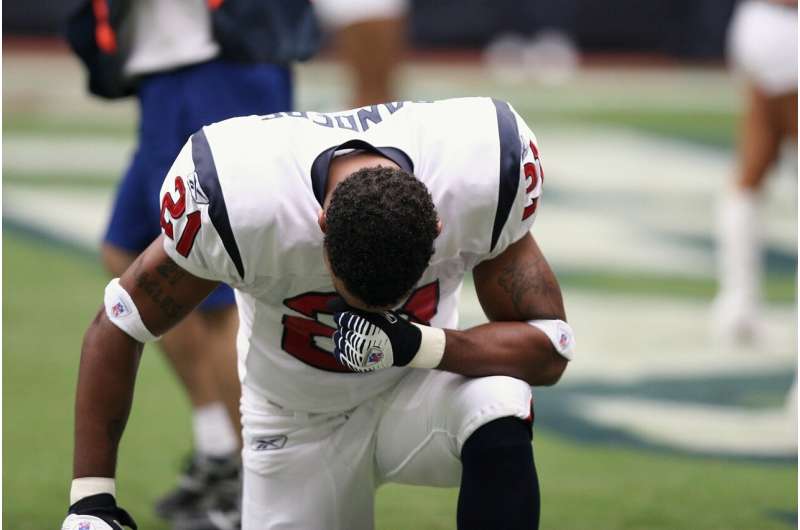Study of former NFL players reveals racial disparities in chronic pain

A new study by researchers from Mass General Brigham and Harvard Medical School found that among participants in the Football Players Health Study at Harvard University, Black players experienced more intense and higher levels of pain that interfered with daily activities than white players. The findings, published in the journal Pain, represent one of the largest studies on pain in racial and ethnic minorities, and lend support to similar findings of race-related disparities in chronic pain in general populations.
“We’ve known for quite a while that there are large racial and ethnic differences in pain outcomes around the world, just like there are for most other medical outcomes,” said corresponding author Robert R. Edwards, Ph.D., a clinical psychologist in the Pain Management Center at Brigham and Women’s Hospital, a founding member of the Mass General Brigham healthcare system. “It’s only recently we’ve been studying some of the contributors to these sorts of effects in the U.S.”
Chronic pain is estimated to affect over 100 million American adults, and it is among the leading global causes of reduced quality of life. The annual cost of chronic pain approaches one trillion dollars in the United States. However, the burden of this pain is not distributed equally.
“There are many factors that likely drive the racial disparities in chronic pain that we found in elite athletes, such as discrimination in medical settings, early life socioeconomic disadvantages, and more,” said senior author Rachel Grashow, Ph.D., director of epidemiological research initiatives for the Football Players Health Study at Harvard University and a research scientist at the Harvard T. H. Chan School of Public Health.
Edwards worked with Mass General Brigham colleagues from the Brigham, Massachusetts General Hospital, and Spaulding Rehabilitation Hospital, and the Football Players Health Study, to conduct the study. The team analyzed extensive data which surveyed 3,995 former NFL players on their playing positions, demographics, exposure to injury during their football careers, pain outcomes, and various other health and psychosocial factors.
The researchers found that Black players, though significantly younger than white players, reported more pain intensity and that their pain more greatly impacted their day-to-day life. The disparities were consistent across several statistical models that controlled for confounding factors such as age, body mass index, other health conditions including hypertension, diabetes, and sleep apnea, and football-related factors, such as the frequency of concussion symptoms.
They also found that Black players experienced more severe fatigue, a higher frequency of smoking, and lower frequencies of exercise. Psychosocial factors, including depression, anxiety, and lack of social support, were more strongly associated with pain among Black players compared to white players.
While the study included too many conflicting variables to implicate any one cause of these disparities, the findings demonstrate that racial disparities in chronic pain are more complex than previously understood. The authors conclude that understanding this complexity will prove critical when it comes to correcting these disparities.
“This study is a microcosm of the racial and ethnic disparities in pain that we’ve observed over the years, and reminds us that elite athletic status is not sufficient to eliminate these differences,” said principal investigator of the Football Players Health Study, Ross Zafonte, DO.
Zafonte is president of Spaulding Rehabilitation Network, a Mass General Brigham sports medicine physician, and the Earle P. and Ida S. Charlton Professor and Chair of the Harvard Medical School Department of Physical Medicine and Rehabilitation. “By exploring other factors that are closely associated with differences in pain outcomes, we can help identify therapeutic interventions to improve disparities and facilitate a personalized pain medicine approach that maximizes treatment benefits for populations most acutely impacted by pain.”
More information:
Robert R. Edwards et al, Race differences in pain and pain-related risk factors among former professional American-style football players, Pain (2023). DOI: 10.1097/j.pain.0000000000002948
Journal information:
Pain
Source: Read Full Article



